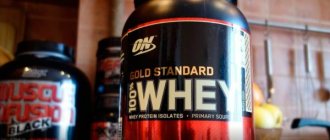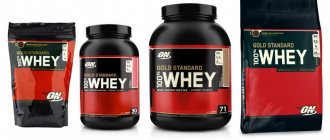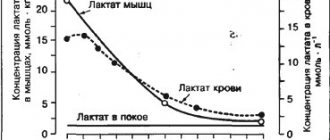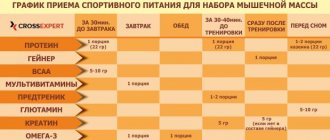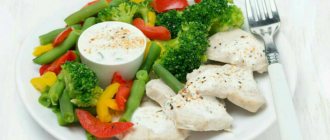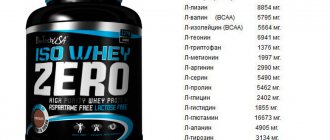The boom in protein production occurred in the 90s, when its high anabolic properties and bioavailability were proven and announced. Today it is the most popular dietary supplement not only among athletes, but also among ordinary people. Protein (English: protein) is a pure protein that is easily and practically absorbed by the body without residue. This is a concentrated powder that stimulates intracellular protein synthesis necessary for muscle growth. In this case, protein is even used for weight loss. With a protein diet using protein, fat is burned without harming muscles, a person does not feel a loss of strength, and metabolism remains at a high level.
Transportation
After cooling, the milk is transported in large refrigerated tanks to the nearest cheese factory. Why cheese, you ask? Because whey protein is typically a byproduct of the cheese making process .
The fact is that milk is a source of casein, a special protein that easily forms a dense gel structure. The same one from which cheese is easily made.
By the way, casein protein can also be bought at a sports nutrition store. As you guessed, it is also made from milk. Unlike whey protein, casein protein has its own advantages. If you want to know about them, read a separate article.
Whey Protein Hydrolyzate (WPH)
Protein production by hydrolysis, in which large protein molecules are divided into individual fragments. A similar process occurs in the digestive tract and takes a lot of energy from the body. Protein hydrolyzate eliminates this need in the body; the resulting protein is absorbed immediately. Some experts believe that when restoring muscles you should only take hydrolyzate, although it is worth considering that this is the most expensive type of protein. It is worth noting that the capabilities of modern equipment make it possible to adjust hydrolysis in such a way that the content of small protein fractions can be only 3-50%. This can significantly reduce the cost of the product. With a low content of small fragments, such a protein becomes bitter.
Separation of whey from casein
Pasteurized milk is treated with enzymes to separate the whey from the casein. When interacting with enzymes, milk is divided into liquid and solid particles. The solids are collected and used to make cheese, while the liquids are used to make protein powder.
The process of creating whey protein is often associated with cheese production
Literature[edit | edit code]
- https://www.jstor.org/discover/10.2307/25558155?uid=2&uid=4&sid=21102576159633
- https://spb.sovsport.ru/longread/protein_bcaa_expertiza/
- “A high protein diet (3.4 g/kg/d) combined with a heavy resistance training program improves body composition in healthy trained men and women – a follow-up investigation” Jose Antonio, Anya Ellerbroek, Tobin Silver, Steve Orris, Max Scheiner , Adriana Gonzalez and Corey A Peacock. Journal of the International Society of Sports Nutrition. 2015 12:39 DOI: 10.1186/s12970-015-0100-0© Antonio et al. 2015
- “Alert: Protein drinks / You don't need the extra protein or the heavy metals our tests found” Consumer Reports, July 2010, p. 24-27
- Symons, T. B.; Sheffield-Moore, M.; Wolfe, R.R.; Paddon-Jones, D. (2009). "A Moderate Serving of High-Quality Protein Maximally Stimulates Skeletal Muscle Protein Synthesis in Young and Elderly Subjects." Journal of the American Dietetic Association 109 (9): 1582–1586.
- Pennings B, Groen BB, Amino acid absorption and subsequent muscle protein accretion following graded intakes of whey protein in elderly men. Am J Physiol Endocrinol Metab. 2012 Feb 14.
- Macnaughton LS et al. The response of muscle protein synthesis following whole-body resistance exercise is greater following 40 g than 20 g of ingested whey protein //Physiological Reports. – 2016. – T. 4. – No. 15. – P. e12893.
- ↑ 8,08,18,28,38,4 Baer DJ, Stote KS, Paul DR, Harris GK, Rumpler WV, Clevidence BA. Whey protein but not soy protein supplementation alters body weight and composition in free-living overweight and obese adults. J Nutr. 2011 Aug;141(8):1489-94. doi: 10.3945/jn.111.139840. Epub 2011 Jun 15.
- ↑ 9,09,1 Mojtahedi MC, Thorpe MP, Karampinos DC, Johnson CL, Layman DK, Georgiadis JG, Evans EM. The effects of a higher protein intake during energy restriction on changes in body composition and physical function in older women. J Gerontol A Biol Sci Med Sci. 2011 Nov;66(11):1218-25. doi: 10.1093/gerona/glr120. Epub 2011 Jul 27.
- ↑ 10,010,110,210,310,410,510,610,7 Pal S, Ellis V, Dhaliwal S. Effects of whey protein isolate on body composition, lipids, insulin and glucose in overweight and obese individuals. Br J Nutr. 2010 Sep;104(5):716-23. doi: 10.1017/S0007114510000991. Epub 2010 Apr 9.
- ↑ 11,011,111,211,3 Hoffman JR, Ratamess NA, Tranchina CP, Rashti SL, Kang J, Faigenbaum AD. Effect of protein-supplement timing on strength, power, and body-composition changes in resistance-trained men. Int J Sport Nutr Exerc Metab. 2009 Apr;19(2):172-85.
- ↑ 12,012,112,212,3 Kerksick CM, Rasmussen CJ, Lancaster SL, Magu B, Smith P, Melton C, Greenwood M, Almada AL, Earnest CP, Kreider RB. The effects of protein and amino acid supplementation on performance and training adaptations during ten weeks of resistance training. J Strength Cond Res. 2006 Aug;20(3):643-53.
- ↑ 13,013,113,2 Andersen LL, Tufekovic G, Zebis MK, Crameri RM, Verlaan G, Kjaer M, Suetta C, Magnusson P, Aagaard P. The effect of resistance training combined with timed ingestion of protein on muscle fiber size and muscle strength. Metabolism. 2005 Feb;54(2):151-6.
- ↑ 14,014,114,2 Reitelseder S, Agergaard J, Doessing S, Helmark IC, Lund P, Kristensen NB, Frystyk J, Flyvbjerg A, Schjerling P, van Hall G, Kjaer M, Holm L. Whey and casein labeled with L-[1 -13C]leucine and muscle protein synthesis: effect of resistance exercise and protein ingestion. Am J Physiol Endocrinol Metab. 2011 Jan;300(1):E231-42. doi: 10.1152/ajpendo.00513.2010. Epub 2010 Nov 2.
- ↑ 15,015.1 Frid AH, Nilsson M, Holst JJ, Björck IM. Effect of whey on blood glucose and insulin responses to composite breakfast and lunch meals in type 2 diabetic subjects. Am J Clin Nutr. 2005 Jul;82(1):69-75.
- ↑ 16.016.1 Nilsson M, Holst JJ, Björck IM. Metabolic effects of amino acid mixtures and whey protein in healthy subjects: studies using glucose-equivalent drinks. Am J Clin Nutr. 2007 Apr;85(4):996-1004.
- ↑ 17,017.1 Weisgarber KD, Candow DG, Vogt ES. Whey protein before and during resistance exercise has no effect on muscle mass and strength in untrained young adults. Int J Sport Nutr Exerc Metab. 2012 Dec;22(6):463-9. Epub 2012 Jul 4.
- ↑ 18,018,118,218,318,4 Chitapanarux T, Tienboon P, Pojchamarnwiputh S, Leelarungrayub D. Open-labeled pilot study of cysteine-rich whey protein isolate supplementation for nonalcoholic steatohepatitis patients. J Gastroenterol Hepatol. 2009 Jun;24(6):1045-50. doi: 10.1111/j.1440-1746.2009.05865.x.
- ↑ 19,019,119,219,319,4 Sheikholeslami Vatani D, Ahmadi Kani Golzar F. Changes in antioxidant status and cardiovascular risk factors of overweight young men after six weeks supplementation of whey protein isolate and resistance training. Appetite. 2012 Dec;59(3):673-8. doi: 10.1016/j.appet.2012.08.005. Epub 2012 Aug 10.
- Frestedt JL, Zenk JL, Kuskowski MA, Ward LS, Bastian ED. A whey-protein supplement increases fat loss and spares lean muscle in obese subjects: a randomized human clinical study. Nutr Metab (Lond). 2008 Mar 27;5:8. doi:10.1186/1743-7075-5-8.
- ↑ 21,021,121.2 Ágnes A Fekete, Carlotta Giromini, Yianna Chatzidiakou, D Ian Givens, and Julie A Lovegrove. Whey protein lowers blood pressure and improves endothelial function and lipid biomarkers in adults with prehypertension and mild hypertension: results from the chronic Whey2Go randomized controlled trialh. The American Journal of Clinical Nutrition, October 26, 2016. ttp://ajcn.nutrition.org/content/early/2016/10/25/ajcn.116.137919
- Pennings B, Groen B, de Lange A, Gijsen AP, Zorenc AH, Senden JM, van Loon LJ. Amino acid absorption and subsequent muscle protein accretion following graded intakes of whey protein in elderly men. Am J Physiol Endocrinol Metab. 2012 Apr 15;302(8):E992-9. doi: 10.1152/ajpendo.00517.2011. Epub 2012 Feb 14.
- Tipton KD, Elliott TA, Cree MG, Wolf SE, Sanford AP, Wolfe RR. Ingestion of casein and whey proteins result in muscle anabolism after resistance exercise. Med Sci Sports Exerc. 2004 Dec;36(12):2073-81.
- ↑ 24,024,124,224,324,4 Bortolotti M, Maiolo E, Corazza M, Van Dijke E, Schneiter P, Boss A, Carrel G, Giusti V, Lê KA, Quo Chong DG, Buehler T, Kreis R, Boesch C, Tappy L. Effects of a whey protein supplementation on intrahepatocellular lipids in obese female patients. Clin Nutr. 2011 Aug;30(4):494-8. doi: 10.1016/j.clnu.2011.01.006. Epub 2011 Feb 1.
- ↑ 25,025,125,225,3 Pal S, Ellis V. Acute effects of whey protein isolate on blood pressure, vascular function and inflammatory markers in overweight postmenopausal women. Br J Nutr. 2011 May;105(10):1512-9. doi: 10.1017/S0007114510005313. Epub 2011 Jan 28.
- Zhu K, Meng X, Kerr DA, Devine A, Solah V, Binns CW, Prince RL. The effects of a two-year randomized, controlled trial of whey protein supplementation on bone structure, IGF-1, and urinary calcium excretion in older postmenopausal women. J Bone Miner Res. 2011 Sep;26(9):2298-306. doi: 10.1002/jbmr.429.
- Lorenzen J, Frederiksen R, Hoppe C, Hvid R, Astrup A. The effect of milk proteins on appetite regulation and diet-induced thermogenesis. Eur J Clin Nutr. 2012 May;66(5):622-7. doi: 10.1038/ejcn.2011.221. Epub 2012 Jan 25.
- Benjamin J, Makharia G, Ahuja V, Anand Rajan KD, Kalaivani M, Gupta SD, Joshi YK. Glutamine and whey protein improve intestinal permeability and morphology in patients with Crohn's disease: a randomized controlled trial. Dig Dis Sci. 2012 Apr;57(4):1000-12. doi:10.1007/s10620-011-1947-9. Epub 2011 Oct 26.
- https://www.reddit.com/r/science/comments/5ad74e/whey_protein_supplement_significantly_lowers/
Whey Purification
The liquid part of the product contains not only whey, but also impurities - in the form of fats and carbohydrates. Therefore, the liquid whey is sent for further purification. During this process, not only fats and carbohydrates , but also part of the water along with minerals .
The liquid thus obtained is processed to obtain whey protein concentrate (WPC). The liquid whey is sent to the protein production plant, where it is instantly loaded into a massive network of stainless steel turbines with special ceramic filters.
The entire process occurs naturally in a cold environment. During this processing, fats and lactose are separated from the liquid solution , ultimately producing whey protein in liquid form.
Raw materials for protein production
It is not difficult to guess that the main raw material for the production of protein mixtures is milk. Milk is an amazing food product, a nutritious liquid produced by the mammary glands of female mammals. The main purpose of milk is to feed the young. Baby mammals feed only on milk and grow very quickly. Therefore, milk contains all the substances necessary for life, namely:
- Fats
- Squirrels
- Carbohydrates
- Minerals
- Vitamins
Milk is in liquid form, not because it contains a lot of water, but because the substances in milk are dissolved in each other. The dry mass of substances in milk is 12%-13% of the total mass of the product or volume.
The main raw material for the production of protein mixtures is milk.
Drying
Before you get the protein in the familiar packaging, you just need to dry it. This is the last step in whey processing. Liquid whey protein is placed in a hot and cold air dryer to evaporate the water and separate the solids from the liquid.
The resulting powder may contain about 90% whey . This process is also used to ensure that the whey does not lose its nutritional value and the protein does not denature (change its structure).
All about plant proteins - interview with sales specialist Matthias Aschenbrenner
Is plant protein production just a short-term trend or rather a development with long-term effects? What role do Flottweg decanter centrifuges play in the separation of plant proteins? Matthias Aschenbrenner, sales specialist at Flottweg, answers the most important questions about extracting proteins from plant materials.
The market for plant proteins is currently growing. Is it a short-term boom or long-term development?
Of course, this is a long-term development. Due to global population growth and limited resources, the importance of plant proteins will continue to grow. In addition, a diet based on plant-based foods is gaining popularity. People who eat meat are also turning to plant-based alternatives if they like the taste and find them healthy and affordable. Product development in the plant protein industry is evolving rapidly. These are the best conditions for long-term progressive development of the market.
What agricultural crops can be used as raw materials for the production of proteins?
We divide them into two main groups of protein sources: Starches and oilseeds. Starch crops include peas, beans, mung beans, lentils, etc. Oilseed crops include soybeans, lupine, canola, sunflower, flax seed and many more. Due to high demand in the food industry, new sources of protein are constantly being added. In principle, protein can be extracted from almost any crop, but profitability is the key factor.
What raw materials are the most popular now, and what trends are emerging?
Currently, peas and soy are the undisputed leaders, but we are also seeing a growing demand for alternative protein sources. There is also a noticeable trend towards regionalism. This means that local, i.e., common in a given region, types of agricultural crops are most in demand. For example, in Europe, agricultural crops growing in this region (beans, lupine and sunflower) are popular. In addition to economic benefits, such local crops make an important contribution to the biodiversity of the cultural landscape.
How is plant protein made?
The process consists of two stages: extraction and coagulation. In the first step, the protein is extracted from the plant material. The flour or flakes are suspended at a high alkaline pH for approximately 1 hour and then passed through a decanter, which separates the liquid phase (dissolved protein) and the insoluble sediment. In the next step, the coagulation step, the dissolved protein is coagulated into a precipitate by lowering the pH value. The protein precipitates and can be separated using a Sedicanter®.
Flottweg offer only equipment or complete technologies for the extraction of plant protein?
Both. We have customers who develop their own technologies and order suitable equipment from Flottweg. Other customers specify the characteristics of raw materials and products, and Flottweg develops individual technology for them.
Does Flottweg offer ready-to-use systems for the production of plant protein?
We can offer the complete production process from flour to wet protein. Subsequently, the protein can be processed as a wet product directly into food or fed into the dryer. We work closely with international companies in the drying and flour milling industry.
What related products are produced and what can be done with them?
Related products can be further processed, depending on customer requirements, to create additional value. For example, starchy crops such as peas and beans produce high-quality starch and fiber fractions that are highly sought after by the food and feed industries.
What level of protein content can be achieved using FW technology?
This technology allows achieving protein levels of more than 90%. This product is called protein isolate. Lower concentrations of protein are usually called concentrate. The quality of the raw material is critical to the purity of the protein. We always ask new customers to provide samples of raw materials. In our modern laboratory we can evaluate the quality of samples and provide preliminary feedback to the customer.
What protein quality can be achieved with Flottweg technology?
Our technological development ensures the most gentle processing of protein. Many years of experience allow us to understand exactly which different types of raw materials are most in demand. As a result, we obtain the most water-soluble protein of excellent quality, produced from local raw materials. In subsequent stages, for example during the drying process, it is important to maintain the quality at the highest possible level. Subsequent heat/mechanical processing can control other functional properties (e.g., gel formation/water retention) required for the plant protein.
What production potential does Flottweg offer?
Depending on customer requirements, we can offer everything from a manual pilot plant with a capacity of 100 kg flour per hour (220.4 lb/h) to a highly automated protein production line with a capacity of up to 10 tons of flour per hour. Thanks to the modular design of protein production lines, productivity can be increased as needed.
How does Flottweg differ from other suppliers?
In particular in the field of plant proteins, Flottweg offers a unique combination of technology and experience. The unique Sedicanter Flottweg is the ideal equipment for working with substances that are difficult to separate. In addition, FW equipment includes unique features such as an automatically adjustable phase separation disc and Simp Drive® gearbox for maximum flexibility and efficiency. However, our developments are not limited to mechanical components. With our award-winning HMI design, we've been able to take usability to the next level. Optimizing our protein production process has allowed us to significantly reduce water consumption and wastewater volume. Production and automation of the equipment takes place in the Vilsbiburg plant, of which we are particularly proud. Competitors often outsource the automation process, which can lead to delays in the production process due to the high level of complexity. At Flottweg, automation is implemented from the very beginning. Many years of international and specialized experience enable Flottweg to meet the requirements of customers around the world at the highest level by offering customized solutions.
Who are Flottweg's typical customers?
Our customers in the plant protein industry are generally well-known entities. First of all, these are the relevant corporations. At the same time, more and more medium-sized companies are interested in the production of plant protein. We are also approached by research institutes and start-ups. We offer customized solutions for all these customers.
How is a customer project usually implemented with Flottweg?
We always use a systematic approach. Firstly, the initial process is carried out on the basis of a special form filled out by the customer, which ensures that all the necessary information is received. We provide the customer with the best potential solutions and the information needed to make decisions. After choosing a specific solution, it is necessary to determine the characteristics of the raw materials in the laboratory. Based on these results, you can roughly estimate what qualities the product will have in the future. The next step is usually to check the results using decanter centrifuges at the Flottweg Technology Center. After successful trial operation in the technology center, many customers prefer preliminary design. The results include an individual material balance and corresponding production concepts, which allow a full economic assessment of the upcoming investment. Then comes ordering the system.
Norm per day
The calculation of the daily intake of the supplement is strictly individual and depends on age, gender, health status and sports activity. The approximate norm for adults is from 0.7 g to 2 g per kilogram of body. The best result can be achieved if you distribute the daily norm into 4-6 servings, combining it with meals.
For example, with a maximum volume of 2 g, the calculation will look like this:
2g x 75 kg (person weight) = 150 g: 30 g (serving) = 5 daily portions of 30 g each.
Where is the best place to buy sports nutrition?
There are many specialized stores selling sports nutrition on the Internet and in retail. Also, sports nutrition of various brands can now be found on the websites of large online stores, such as Ozone, Yulmart, Wildberry. Many athletes still prefer to order sports supplements from the USA or Germany, which no longer makes much sense. The Russian sports drink market has grown and developed greatly in recent years. The quality of such additives is no worse than their foreign counterparts, and the price is much more reasonable. It is now popular to buy sports nutrition in bulk or by weight for making the final products yourself. This allows you not only to reduce the cost of sports nutrition, but also to make good money on resale.
How to calculate dosage
Each body requires its own daily protein intake. It depends on the type of activity, physical activity, metabolism and much more. The body requires a minimum of 40 g of protein, the average is 90 g, and the maximum is 120 g. Exceeding the maximum amount is fraught with negative consequences, as well as the fact that the protein will not be absorbed and poisoning will occur. At the same time, a person can absorb only 35 grams of protein at one time.
The desired result also matters when calculating the amount of protein and its type.
Example:
- When losing weight, if there is a lack of protein, the muscles are destroyed and the weight comes off for this reason alone. To avoid this, you should eat food in 5-6 meals, two or three of which are replaced with a protein shake.
- When gaining weight, drinking a drink before and after training significantly improves athletic performance. The number of meals during the day should not be more than 6 times.
Benefits, harms, contraindications
The beneficial effects of protein can hardly be overestimated. It is important for athletes and those losing weight in everyday life. The dietary product helps the cardiovascular system - lowers cholesterol levels, helps maintain normal sugar levels. Fat deposits are reduced. Appetite decreases. Immunity and overall stamina are increased.
Despite the low calorie content of protein, violation of consumption standards can cause excess energy in people leading a sedentary lifestyle, which can be converted into fat mass.
Contraindications for use are chronic diseases, inflammation, functional disorders of the liver and kidneys, and allergies to any component of the protein composition.
Compound
Complete protein is a complex of amino acids – essential and non-essential. Essential amino acids are not produced by the body itself; they must be obtained from the outside. Nonessential amino acids are represented by the following groups:
- aspartic and glutamic acid;
- asparagine;
- glycine;
- argenine;
- lanin;
- proline;
- glutamine;
- tyrosine;
- serine;
- cystine.
As part of the supplement, this list is additionally enriched with minerals and vitamins.
Beneficial features
The benefits of protein are as follows:
- Suppressing the feeling of hunger. As a result, daily calorie consumption decreases and the weight loss process starts.
- Reduces the amount of sugar in the blood.
- A hearty and healthy snack.
- Contains essential amino acids for body restoration.
- It is easily digestible and does not leave a feeling of heaviness in the stomach.
- Charges the body with energy, makes it stronger and more resilient.
- Normalizes insulin levels.
